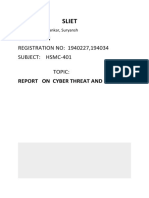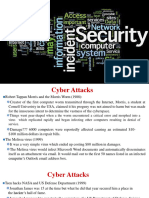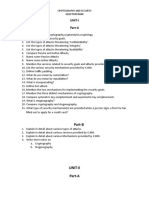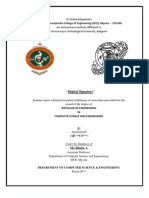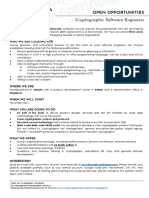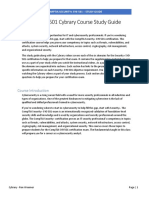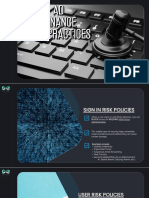0% found this document useful (0 votes)
19 views36 pagesChapter 2 V2
The document discusses the principles of cybersecurity, focusing on threats, vulnerabilities, and attacks. It defines key concepts such as vulnerabilities as weaknesses in security systems, threats as potential harm, and controls as measures to block threats. The document also categorizes types of attacks and attackers, and highlights various cybersecurity tools and strategies to mitigate risks.
Uploaded by
محمد السواديCopyright
© © All Rights Reserved
We take content rights seriously. If you suspect this is your content, claim it here.
Available Formats
Download as PDF, TXT or read online on Scribd
0% found this document useful (0 votes)
19 views36 pagesChapter 2 V2
The document discusses the principles of cybersecurity, focusing on threats, vulnerabilities, and attacks. It defines key concepts such as vulnerabilities as weaknesses in security systems, threats as potential harm, and controls as measures to block threats. The document also categorizes types of attacks and attackers, and highlights various cybersecurity tools and strategies to mitigate risks.
Uploaded by
محمد السواديCopyright
© © All Rights Reserved
We take content rights seriously. If you suspect this is your content, claim it here.
Available Formats
Download as PDF, TXT or read online on Scribd
/ 36































